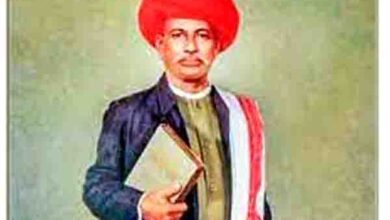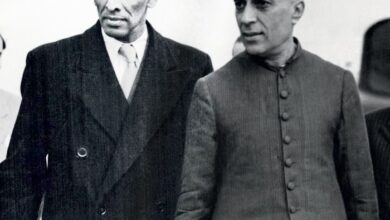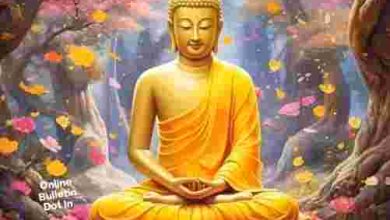कब बने सत्याग्रही गांधीजी !! kab bane satyaagrahee gaandheejee !!
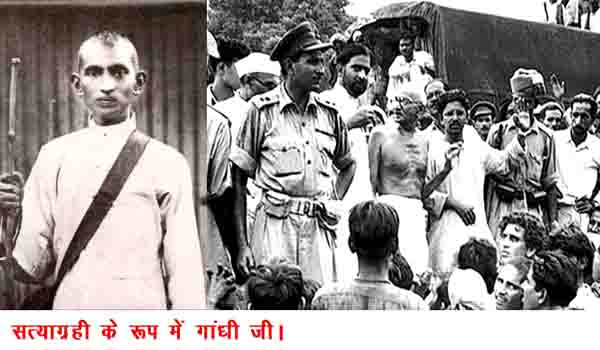
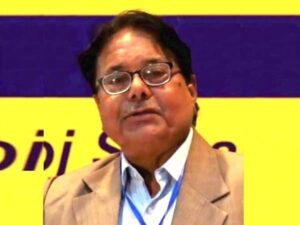
©के. विक्रम राव, नई दिल्ली
–लेखक इंडियन फेडरेशन ऑफ वर्किंग जर्नलिस्ट (IFWJ) के राष्ट्रीय अध्यक्ष हैं।
आज ही उस सर्द रात को 130—वर्ष पूर्व (7 जून 1893) पोरबंदर से करीब बीस हजार किलोमीटर दूर बैरिस्टर एमके गांधी को गोरे अफ्रीकी रेलकर्मी पीटरमारिट्ज स्टेशन के प्लेटफार्म पर सामान सहित न फेंक देते तो? सत्याग्रह शब्द कब जन्मता ? महात्मा गांधी क्या होते ? भारत को आजादी में कितना समय लग जाता ? यह युगांतकारी घटना सर्वविदित है। स्कॉटिश गद्यकार थामस कार्लाइल के कथन को याद कर लें कि : ”वीरों का जीवन चरित ही इतिहास है।” इसीलिये बापू युगप्रवर्तक बन गये। अश्वेतों का नूतन इतिहास रचने लगे। गुलाम भारत के अवतार पुरुष बने। हां अवतार पुरुष लौकिक शरीर में।
गांधीजी के भारत आने के पूर्व भारतीय राष्ट्रीय कांग्रेस के संविधान के उद्देश्यों को परिभाषित किया जा चुका था। आजादी हासिल करने के लिये ”शांतिपूर्ण और वैध उपायों” का ही प्रयोग किया जाये। गांधी जी ने संशोधित किया : ”सत्यपूर्ण तथा अहिंसक” कर दिया जाये। बापू कांग्रेस से अलग हो गये थे, जब सम्मेलन ने यह संशोधन (1934) नहीं माना। जवाहरलाल नेहरु भी प्रारम्भ में हिचकिचाते थे। फिर कांग्रेसी समझ गये कि अंग्रेज चालाक है। सुगमता से न जायेंगे, न हटेंगे। कारण था। ब्रिटिश नीति और शासन ने बड़ी संख्या में भारतीयों को अपना ऐच्छिक दास बना लिया था। पुलिस में, सेना में, सभी वेतन भोगी।
तीस करोड़ भारतीयों पर बीस हजार साम्राज्यवादी सरकारी कर्मचारी शासन करते थे। तभी इंडियन सिविल सर्विस (आईसीएस) के रुप में महंगे आज्ञाकारी गुलाम अफसर चयनित हो गये थे। इनमें ब्रजकुमार नेहरु, रतन कुमार नेहरु, इत्यादि थे। मगर जवाहरलाल नेहरु जेल में थे। अर्थात ये कश्मीरी पंडित ब्रिटिश सरकार में भी थे। बापू ने ”भारत छोड़ो” सत्याग्रह में नारा दिया कि ब्रिटिश सेना को ”ना एक भाई, न एक पाई।” मगर बहुत बड़ी तादाद में सिख, जाट और राजपूत आदि फौज में भर्ती हो गये थे। पुलिस में भी हजारों थे। अपने ही भारतीयों को त्रस्त करते रहे। जुल्म ढाते थे। कुछ स्वाधीनता सेनानी भी थे, पर ब्रिटिश राज के झण्डाबरदार अधिक थे।
शायद यही कारण था कि स्वाधीन भारत में नागरिक अधिकारों के लिये सत्याग्रह को परिष्कृत कर सिविल नाफरमानी कहना पड़ा था। मगर यह गांधीवादी शस्त्र इमर्जेंसी (1975—77) में काफी कारगर साबित हुयी। वह दौर दूसरी आजादी की लड़ाई का था। तब प्रश्न उठा था कि क्या आजाद भारत में सत्याग्रह वैध है? सत्ता से जवाब मिला कि ”नहीं”।
मगर जहां संख्यासुर के दम पर सत्तासीन दल निर्वाचित सदनों को क्लीव बना दे, असहमति को दबा दे, आम जन पर सितम ढायें, तो मुकाबला कैसे हो? इसीलिए लोहिया ने गांधीवादी सत्याग्रह को सिविल नाफरमानी वाला नया जामा पहना कर एक कारगर अस्त्र को ढाला था। इसमें वोट के साथ जेल भी जोड़ दिया था। उनका विख्यात सूत्र था” जिन्दा कौमें पांच साल तक इन्तजार नहीं करतीं।” यही सिद्धांत लिआन ट्राट्स्की की शाश्वत क्रान्ति और माओ जेडोंग के अनवरत संघर्ष के रूप में भी प्रचारित हुई थीं। लोहिया ने इतिहास में प्रतिरोध के अभियान की शुरूआत को भक्त प्रहलाद और यूनान के सुकरात, फिर अमरीका के हेनरी डेविड थोरो में देखी थी। अफ्रीका में बापू ने उसे देसी आकार दिया था। लोहिया की मान्यता भी थी कि प्रतिरोध की भावना सदैव मानव हृतंत्री को झकझोरती रहती है, ताकि सत्ता का दम और दंभ आत्मबल को पंगु न बना दे।
स्वाधीन लोकतांत्रिक भारत में सत्याग्रह के औचित्य पर अलग अलग राय व्यक्त होती रही है। जवाहरलाल नेहरू ने प्रधानमंत्री बनते ही निरूपित कर दिया था कि स्वाधीन भारत में सत्याग्रह अब प्रसंगहीन हो गया है। उनका बयान आया था जब डॉ. राममनोहर लोहिया दिल्ली में नेपाली दूतावास के समक्ष सत्याग्रह करते (25 मई 1949) गिरफ्तार हुए थे। नेपाल के वंशानुगत प्रधानमंत्री राणा परिवार वाले नेपाल नरेश को कठपुतली बनाकर प्रजा का दमन कर रहे थें। ब्रिटिश और पुर्तगाली जेलों में सालों कैद रहने वाले लोहिया को विश्वास था कि आजाद भारत में उन्हें फिर इस मानवकृत नर्क में नहीं जाना पड़ेगा। मगर सत्याग्रही रुपी प्रतिरोध की कोख से जन्मा राष्ट्र उसी कोख को लात मार रहा था। अतः आजादी के प्रारंभिक वर्षों में ही यह सवाल उठ गया था कि सत्ता का विरोध और सार्वजनिक प्रदर्शन तथा सत्याग्रह करना क्या लोकतंत्र की पहचान बनें रहेंगे अथवा मिटा दिये जाएंगे? सत्ता सुख लंबी अवधी तक भोगने वाले कांग्रेसियों को विपक्ष में (1977) आ जाने के बाद ही एहसास हुआ कि प्रतिरोध एक जनपक्षधर प्रवृत्ति है। इसे संवारना चाहिए। यह अवधारणा वर्षों में खासकर उभरी है, व्यापी हैं।
अत: अब सिविल नाफरमानी ही सत्याग्रह का नवीनीकृत माध्यम है। मानेंगे नहीं, मारेंगे नहीं ही बुनियादी सिद्धांत हे। जनतंत्र को सबल बनाने हेतु यह शाश्वत रहेगा जबतक न्यायप्रियता मानव स्वभाव नहीं बन जाता। बापू को यही निष्ठावान श्रद्धांजलि होगी।
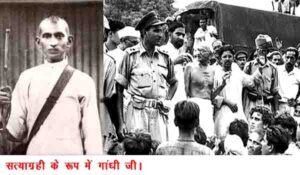
When did Gandhiji become Satyagrahi?
Today, 130 years ago (7 June 1893), about twenty thousand kilometers from Porbandar, the white African railwaymen had not thrown the barrister MK Gandhi with his luggage on the platform of Pietermaritz station on that cold night? When was the word Satyagraha born? What would Mahatma Gandhi be? How long would it take for India to get independence? This epoch-making event is well known. Remember the statement of the Scottish prose writer Thomas Carlyle that: “History is the life story of the heroes.” That is why Bapu became the pioneer of the era. Blacks started making new history. Ghulam became India’s avatar man. Yes, incarnate male in cosmic body.
The objectives of the Constitution of the Indian National Congress had already been defined before Gandhiji came to India. Only “peaceful and lawful means” should be used to achieve independence. Gandhiji amended: to be made “true and non-violent”. Bapu had parted ways with the Congress when the convention did not accept this amendment (1934). Jawaharlal Nehru was also hesitant in the beginning. Then the Congressmen understood that the British were clever. It will not go easily, nor will it move away. The reason was British policy and rule had made a large number of Indians their voluntary slaves. In police, in army, all salaried.
Twenty thousand imperial government servants ruled over 300 million Indians. Only then the expensive obedient slave officers were selected as the Indian Civil Service (ICS). Among them were Brajkumar Nehru, Ratan Kumar Nehru, etc. But Jawaharlal Nehru was in jail. That is, these Kashmiri Pandits were also in the British government. Bapu gave the slogan “Quit India” in the satyagraha that the British army had “neither brother nor one pai.” But a large number of Sikhs, Jats and Rajputs had joined the army. There were thousands in the police too. Keep troubling your own Indians. They were tortured. There were also some freedom fighters, but the flag bearers of the British Raj were more.
Perhaps this was the reason that in independent India, Satyagraha for civil rights had to be refined and called civil disobedience. But it proved to be very effective in Gandhian Arms Emergency (1975–77). That was the period of the second freedom struggle. Then the question arose whether Satyagraha is valid in independent India? The reply from the government was “no”.
But where on the basis of numbers, the ruling party makes the elected houses cleaved, suppresses dissent, inflames the common man, then how can there be a contest? That is why Lohia had molded the Gandhian Satyagraha into an effective weapon by wearing a new band of civil disobedience. In this, jail was also added along with the vote. His famous aphorism was “Living nations do not wait for five years.” The same principle was propagated in Lian Trotsky’s Eternal Revolution and Mao Zedong’s Relentless Struggle. Lohia saw the beginning of the campaign of resistance in history in the devotee Prahlad and Socrates of Greece, then Henry David Thoreau of America. In Africa, Bapu had given him the indigenous shape. Lohia also believed that the spirit of resistance always shakes the human heart, so that the power and arrogance of power does not cripple the self-power.
Different opinions have been expressed on the justification of Satyagraha in independent democratic India. Jawaharlal Nehru had demonstrated as soon as he became the Prime Minister that in independent India, Satyagraha has now become contextless. His statement came when Dr. Ram Manohar Lohia was arrested (25 May 1949) while conducting satyagraha in front of the Nepalese Embassy in Delhi. The hereditary Prime Minister of Nepal was suppressing the people by making the Nepal King a puppet of the Rana family. Lohia, who had been imprisoned for years in British and Portuguese prisons, was confident that he would never again have to go to this humanized hell in independent India. But the nation born out of the womb of Satyagrahi resistance was kicking the same womb. Therefore, in the early years of independence itself, the question arose as to whether opposition to power and public demonstrations and satyagraha would continue to be the hallmark of democracy or would it be abolished? Congressmen, who enjoyed power for a long period, realized that resistance was a pro-people tendency only after coming to the opposition (1977). It should be groomed. This concept has emerged especially over the years, are widespread.
Therefore, now civil disobedience is the only renewed medium of Satyagraha. Will not believe, will not kill is the basic principle. It will be eternal to strengthen democracy until justice becomes human nature. This will be a sincere tribute to Bapu.
मंदिर वापस मिले ! बस यही हल है !! mandir vaapas mile ! bas yahee hal hai !!








